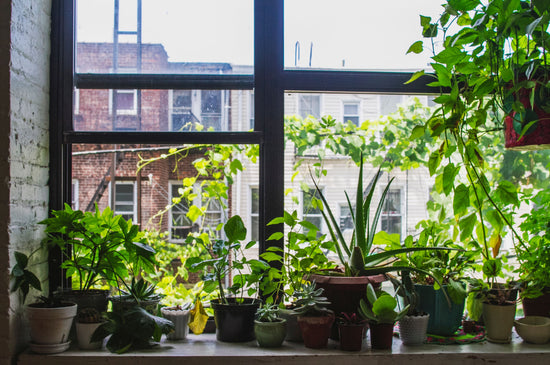How to Stop Killing My Houseplants
Houseplants bring life, beauty, and even health benefits to your home, but keeping them alive and thriving can sometimes feel like a challenge. If you're tired of watching your plants wither away, don't worry—there’s hope! This guide will walk you through practical steps to transform your plant care habits and stop the cycle of houseplant heartbreak.
1. Understand Your Plant’s Needs
Every plant is different, and understanding its specific requirements is the first step to success. Research your houseplants to learn about their preferred light, watering schedule, and environmental conditions. Some popular and easy-to-care-for options include the Spider Plant, the ZZ Plant, and the Pothos.
2. Avoid Overwatering
One of the most common reasons houseplants die is overwatering. Many plants prefer the soil to dry out slightly between waterings. Stick your finger about an inch into the soil—if it feels dry, it’s time to water. For water-loving plants like the Peace Lily, ensure the soil remains consistently moist but not soggy.
3. Provide the Right Light
Light is essential for photosynthesis, and most houseplants fall into one of three categories: bright, indirect light; low light; or direct sunlight. Position your plants based on their needs. For instance, the Philodendron Brasil thrives in bright, indirect light, while the Snake Plant tolerates low light conditions.
4. Use Proper Soil and Containers
The right soil mix and container can make all the difference. Choose soil that matches your plant's needs, such as well-draining soil for succulents or rich, moisture-retaining soil for tropical plants. Ensure your pots have drainage holes to prevent water from pooling, which can lead to root rot.
5. Watch for Pests
Even healthy plants can fall victim to pests like spider mites, mealybugs, or fungus gnats. Inspect your plants regularly and treat any infestations promptly with neem oil or insecticidal soap.
6. Feed Your Plants
Houseplants need nutrients, and feeding them with a balanced fertilizer can encourage growth and vibrant leaves. Follow the recommended schedule for your plant type. For example, tropical plants like the Fiddle Leaf Fig benefit from monthly feeding during the growing season.
7. Create the Right Environment
Humidity and temperature can impact your plant’s health. Many houseplants prefer a humid environment, which can be achieved with a humidifier, pebble trays, or by grouping plants together. Keep them away from drafts and extreme temperature changes.
8. Be Patient
Plants grow slowly, and it’s normal to make mistakes along the way. Pay attention to how your plant responds to changes in care, and adjust accordingly. Growth takes time, and patience will reward you with thriving greenery.
FAQs About Keeping Houseplants Alive
Q: How often should I water my houseplants?
Watering depends on the type of plant and its environment. Check the soil moisture level before watering to avoid overwatering.
Q: Why are my plant’s leaves turning yellow?
Yellow leaves can indicate overwatering, underwatering, or a nutrient deficiency. Assess your plant’s care routine to identify the cause.
Q: Can houseplants survive in low light?
Yes, some houseplants like the snake plant and ZZ plant thrive in low light. Choose plants that match your home’s lighting conditions.
By understanding your plants’ needs and providing the right care, you can stop killing your houseplants and enjoy a thriving indoor jungle. Start your journey with healthy, easy-to-care-for plants from our Houseplant Collection.





